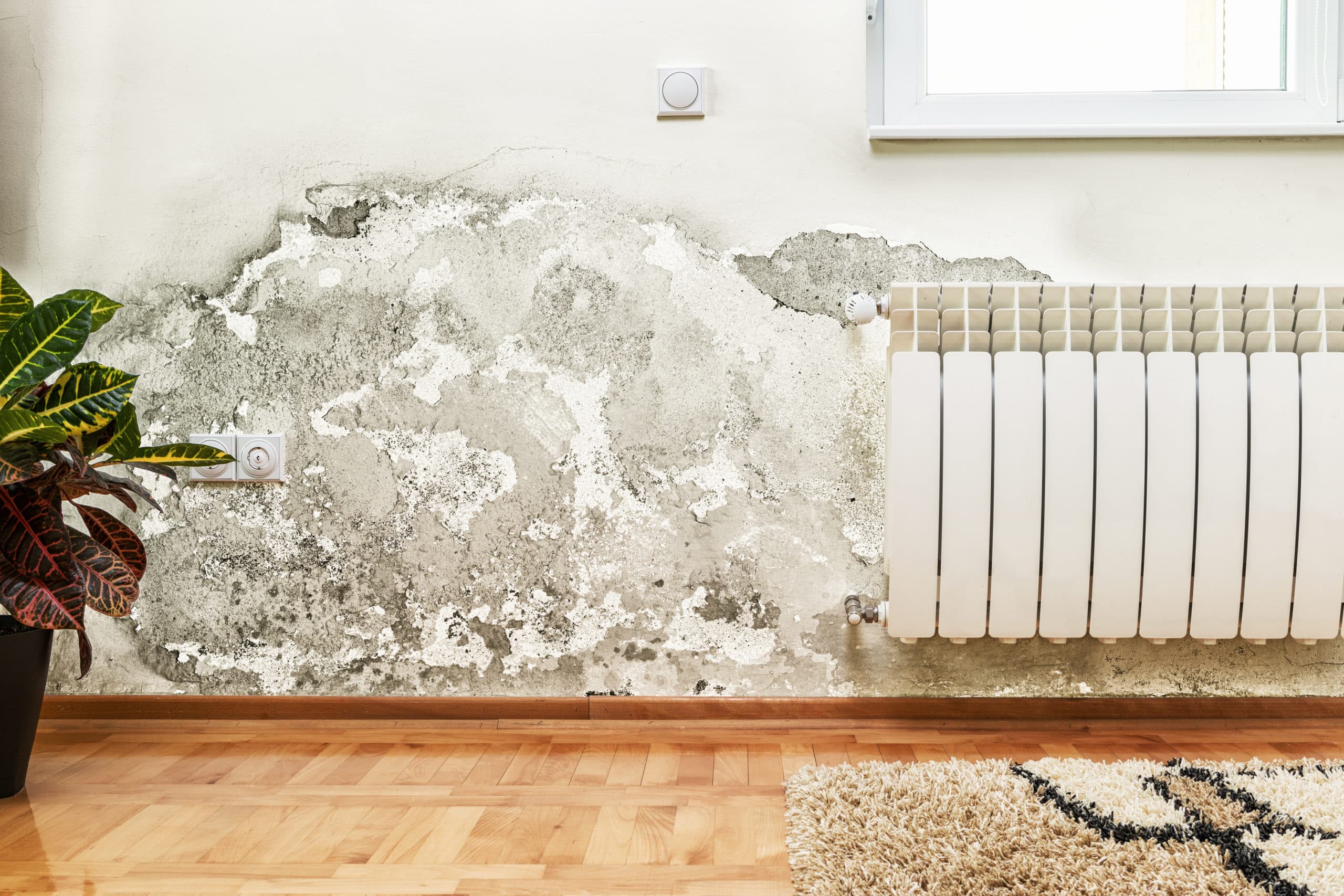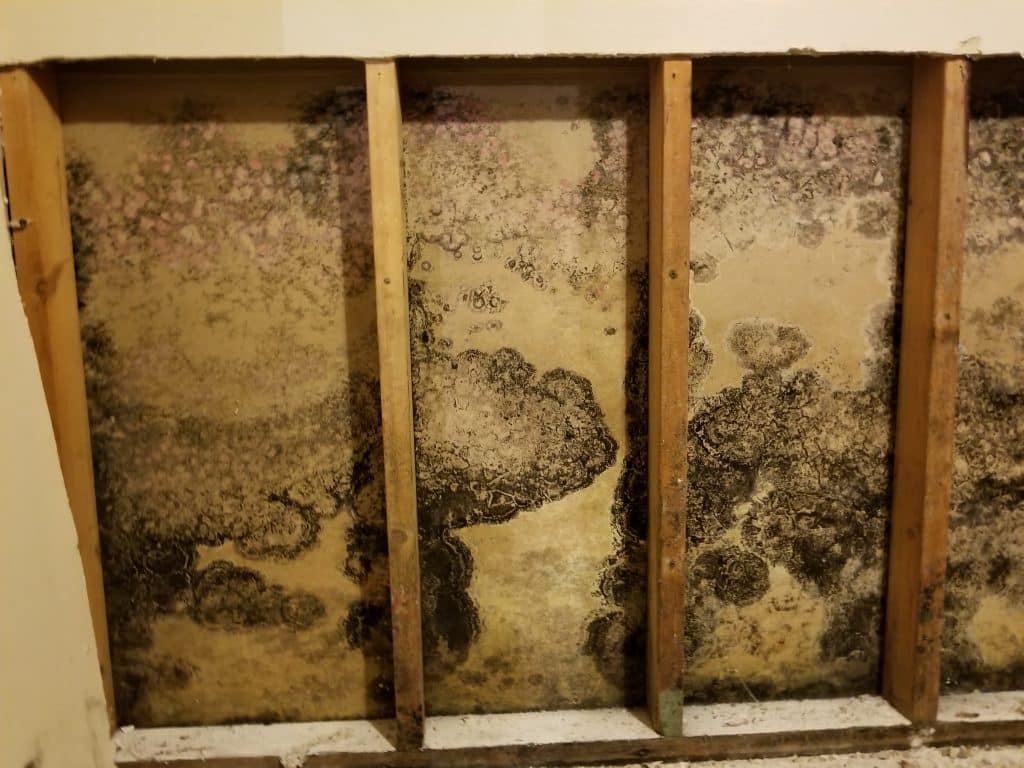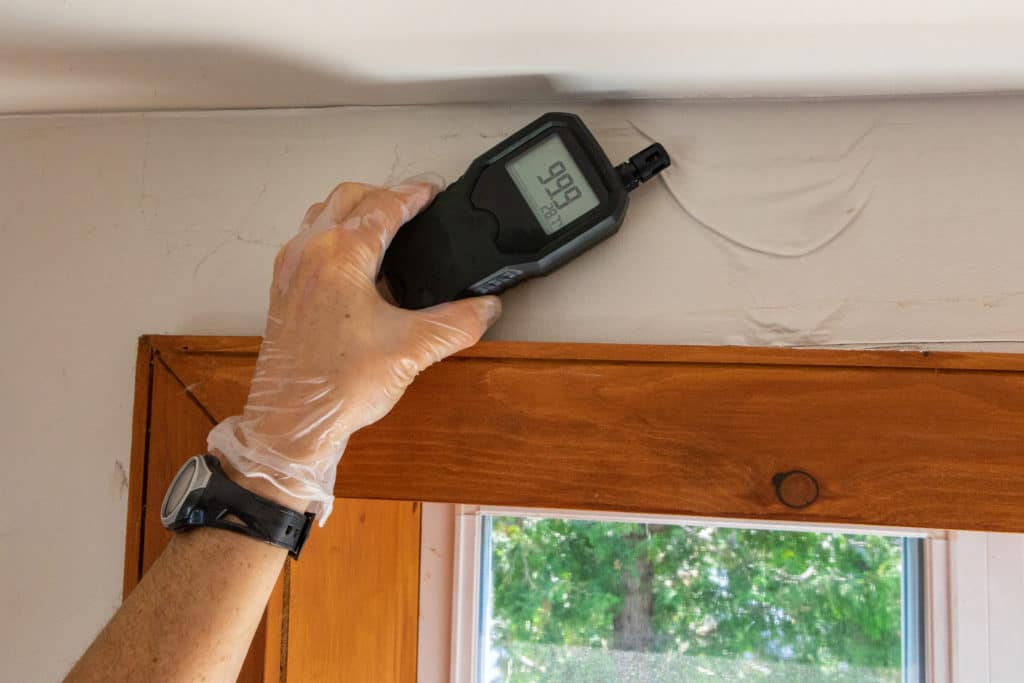
What is Mold?
Mold is a fungus, and like all fungi, it lives in dark and damp areas. Fungi breaks down organic compounds like wood, and are an essential part of the natural environment. In other words, there is always mold. Mold is everywhere, both inside and outside of the house. Mold spreads by creating and releasing spores, which are single cell organisms that float in the air. Spores land and grow on wet, dark areas of organic materials creating more mold.
It would be almost impossible to completely get rid of mold, so instead, focusing on preventing the organic materials of the house from getting wet. This way, the body of mold will not grow or continue to spread throughout the house. There are many ways to prevent moisture from developing in the house where it should not be, but there are some key areas to watch. Areas like the basement, ceilings and walls around plumbing lines, around major utility systems like HVAC systems, and potential roof leaks. Think of anywhere there is running water, or anywhere there is exterior water shed as the priority.
Cleaning up and preventing mold is critical to prevent a lot of airborne health issues, and further deterioration of the wet materials.

What Types of Mold are There?
There are many types of mold that can be found in a house, and its mostly related to where the house is located. During certain inspections, most inspectors will take a sample of the exterior air in order to get a control sample of what kinds of mold are living in your area. Not all mold is toxic, but all large sections of mold should be removed from the house regardless. We will not go over all of them here, as there are several hundred thousand kinds of mold.
Here is a great resource for what types of mold are most prevalent.
When You Should Get a Mold Inspection.
Since mold is so prevenient, and so is moisture intrusion, knowing whether your house has a mold infestation is important for your house and family. Mold tends to hide in dark and damp areas, typically areas with low foot traffic like crawlspaces. You could have mold and not even know about it. Mold can also hide in plain sight like in closets or along the seams of carpeting.
If you see fuzzy growth in the basement, bathrooms, or in dark areas like closets, its a great time to get a mold inspection. But smelling mold is also a viable cause for inspection. If the basement or wet-rooms smell musky, its a great time to get an inspection.

Getting an inspection after a leak or some water penetration, like roof leaks or water coming into the basement, can help with the repairs. Mold can lie dormant for years, only to be reactivated and start creating spores again once the surface materials get too saturated with moisture. These areas can retain moisture for long periods of time due to poor air circulation, and mold growth can occur.
Buying or selling a house, particularly homes that are older or have known challenges with leaks, is a great time for inspection. Mold inspections are not required in the buying or selling a home, but it is considered a best practice.
Types of Mold Inspections.
If you are currently living in a house, and think that you have some mold present, it will benefit you to find out. Having breathing conditions like asthma or chronic obstructive pulmonary disease otherwise known as COPD can make mold hazardous to your health. Finding out if the house has improper levels of mold is done by hiring an inspection company, and performed by a licensed inspector. Inspectors perform several types of inspections in order to inspect for mold.

- Visual Inspection: The first step in any inspection is always a visual identification. This portion of a mold inspection is normally included in most structural and mechanical inspections. Identifying if there is any active mold growth, and more importantly where the mold is growing, allows inspectors to put together the rest of the inspection. Tools such a thermal cameras are typically used in identifying where water, and ultimately mold, could potentially be. Thermal cameras are especially great for identifying these areas behind drywall.
- Surface Sampling: Once the areas of concern are identified, inspectors will then decide how to proceed. If there is a visible, and physically reachable section of mold found, the inspector may recommend a surface sample. The inspector takes either a cotton swab, or a tape sample, and collects some of the mold to send off to a lab. Surface samples allow home owner and any remediation company to know exactly what strain of mold is active.
- Air Sampling: Once mold is found, or even if it is just believed to be in the house, inspectors will then collect air samples throughout the property. This is completed by a machine that pulls air into specific sample containers that hold onto mold spores. Air testing allows for home owners to get an understanding of how much sporing is present in the house, and what areas the sporing is heaviest. From there, the inspector will send the sample off to a lab for analysis.
What a Mold Inspection is Used for.
Once the inspection takes place, and you have the report, what do you use the report for? Mold inspections are not only great for understanding the house and repairs required, but needed for remediation. During the buying and selling of a house, having a mold inspection can give the buyer precedent for mold remediation. Inspection is not a treatment, it is however the first step in the process of getting rid of mold.
Understanding the price of remediation, and a better understanding of the property is always a great idea when buying a house. Though, when it comes to mold management, waiting any time is not recommended. Making sure that all sporing mold is remediated should be a high priority for any home owner.

